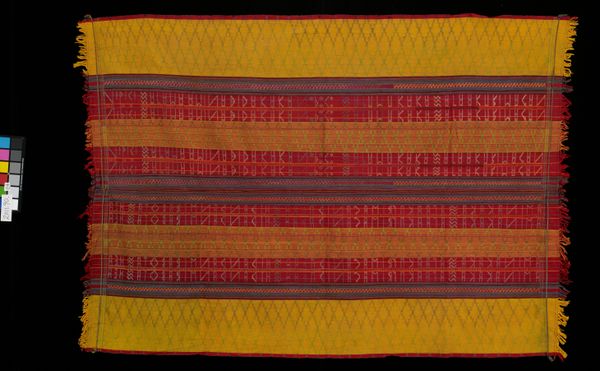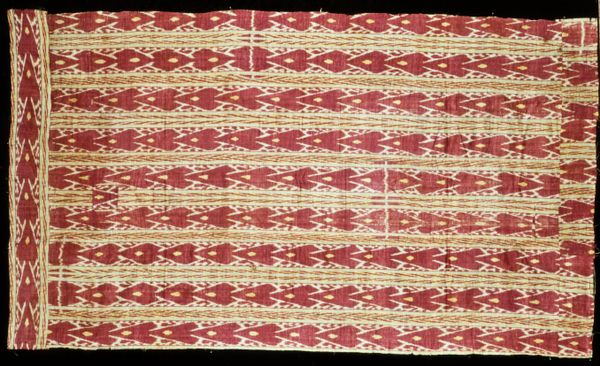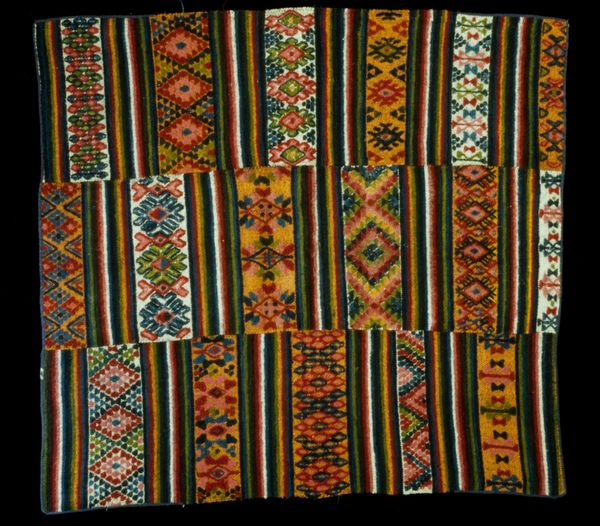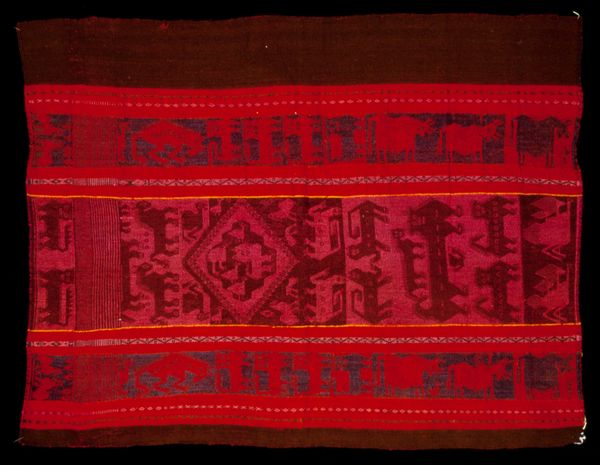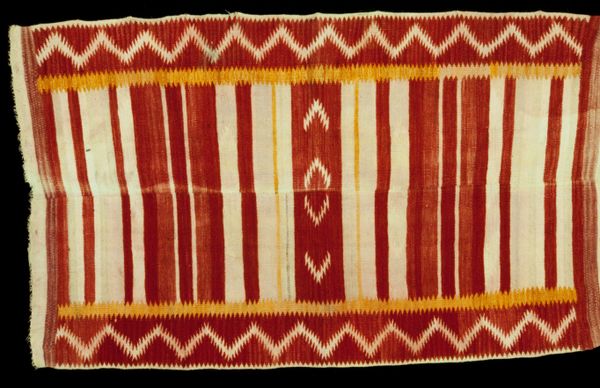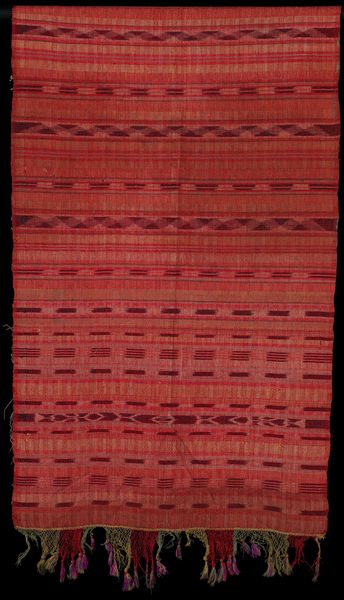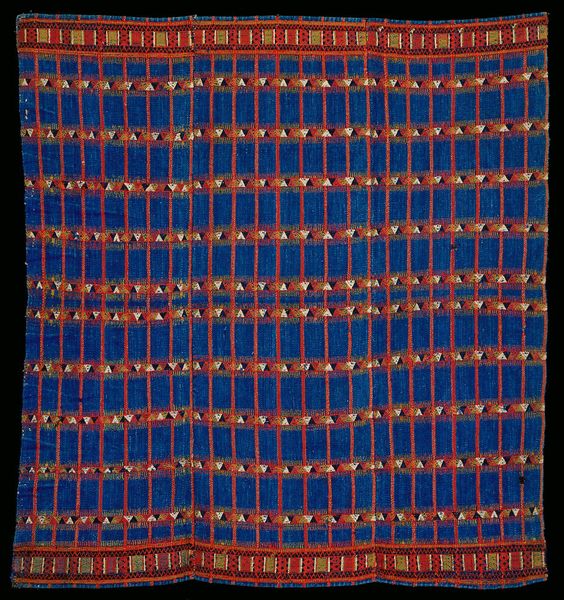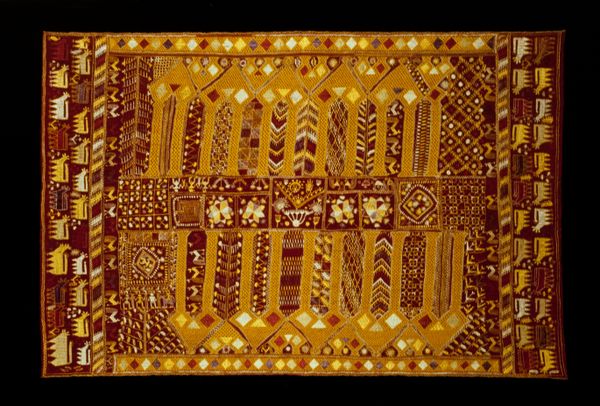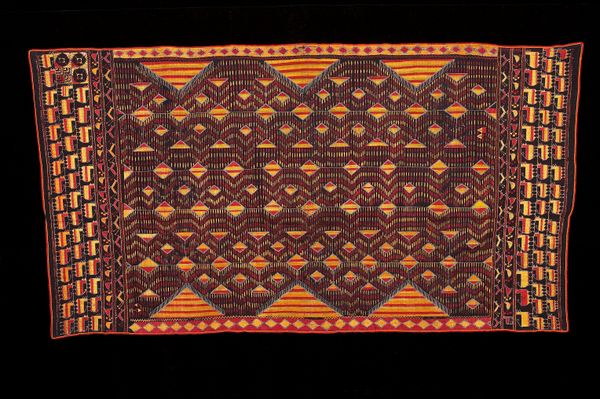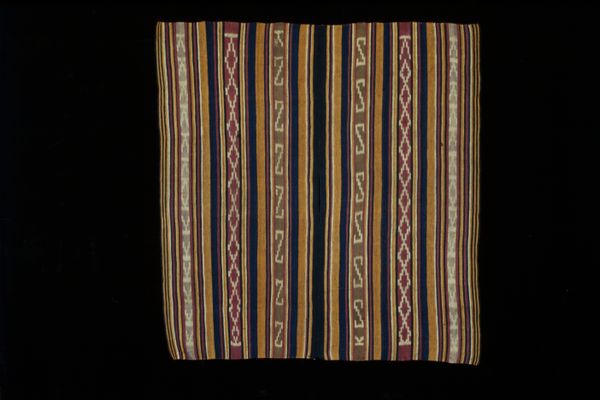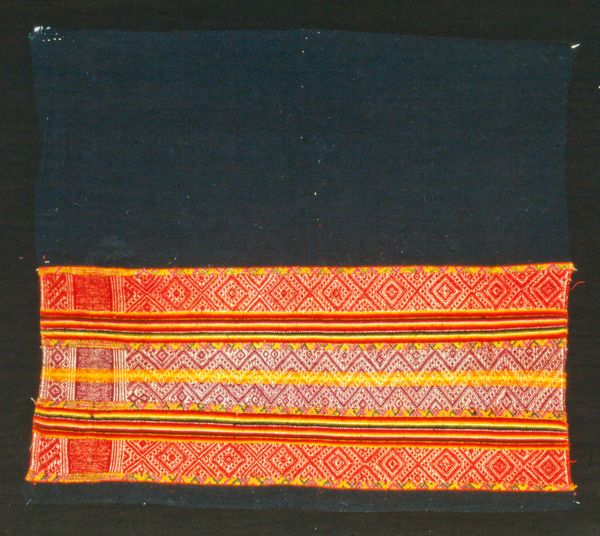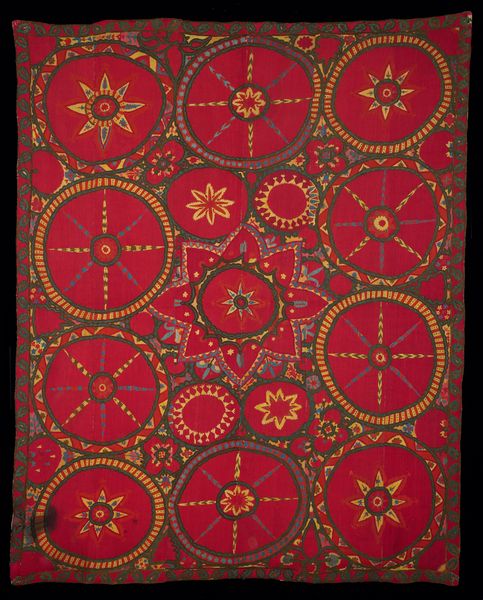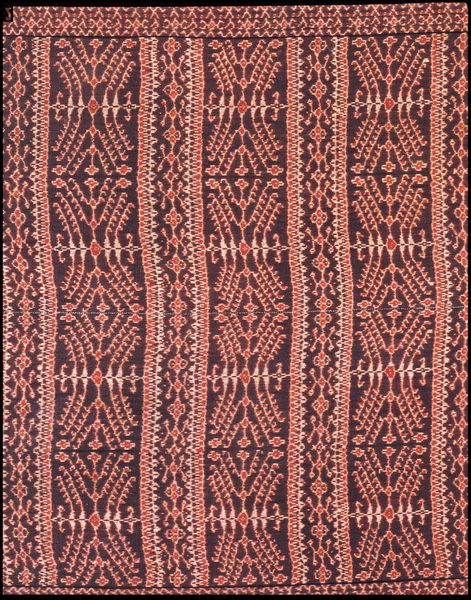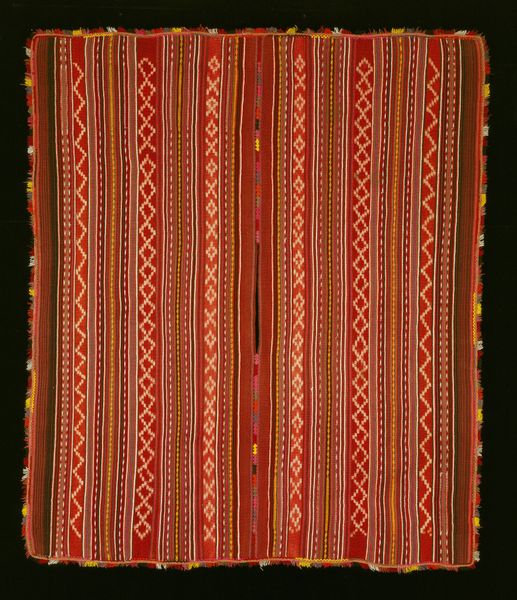
weaving, textile
#
pottery
#
graffiti art
#
weaving
#
textile
#
geometric
#
indigenous-americas
Dimensions: 22.9 × 26 cm (9 × 10 1/4 in.)
Copyright: Public Domain
Editor: Here we have an intriguing textile piece titled “Bag,” potentially created between 1476 and 1532 by the Inca people. The weaving is striking, especially its use of strong vertical lines and geometric patterns. I’m really drawn to the way the colours and designs interact; it feels so intentional. What can you tell me about how this piece fits within the broader scope of Inca visual culture? Curator: That's a great observation. Inca textiles were far more than simple decorative objects; they were potent symbols of status, power, and belief within the Inca empire. Textiles like this "Bag" acted almost as a form of currency or tribute. Can you imagine the social dynamics involved in producing something this intricate? Editor: So, was this "Bag" a commonly produced object or was its use specific to a particular group or setting within Inca society? Curator: Good question. The level of detail and craftsmanship suggests it was likely reserved for elite members of society, maybe royalty or high-ranking officials. Textiles were a key way for the Inca state to maintain control and distribute resources. The patterns themselves might even communicate specific narratives or represent certain social groups. Looking closely, what do you think the consistent geometric forms might tell us? Editor: That makes sense. It's fascinating to think about textiles operating as both art objects and markers of political power. I hadn’t fully appreciated their function within the complex Inca social hierarchy. Thanks for shedding light on this! Curator: My pleasure! Considering art as an integral part of social and political systems offers such enriching insights into both the past and present. Hopefully this perspective helps you better analyze how museums frame artworks today.
Comments
No comments
Be the first to comment and join the conversation on the ultimate creative platform.
